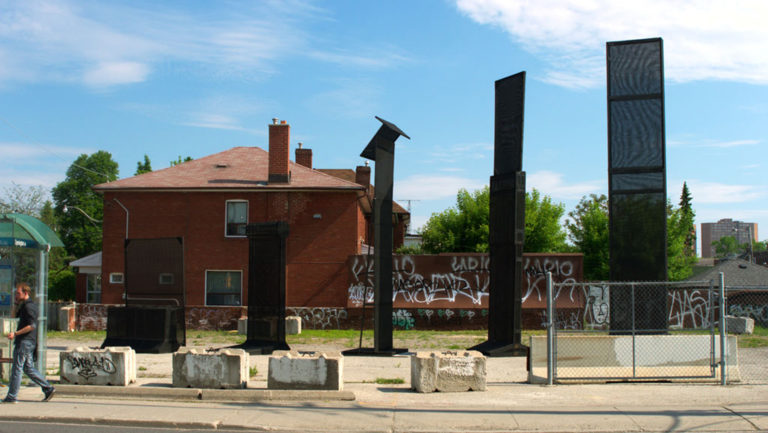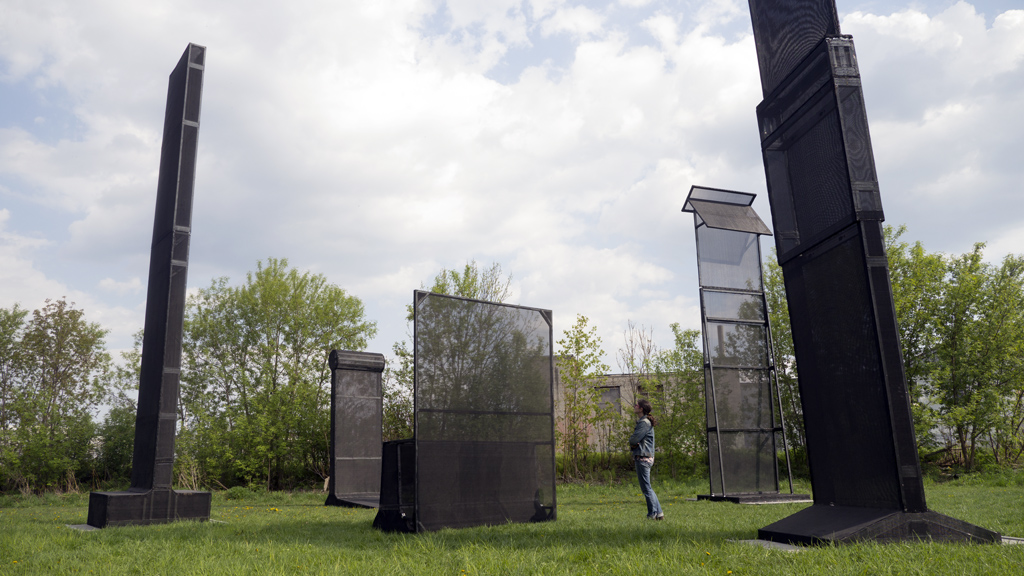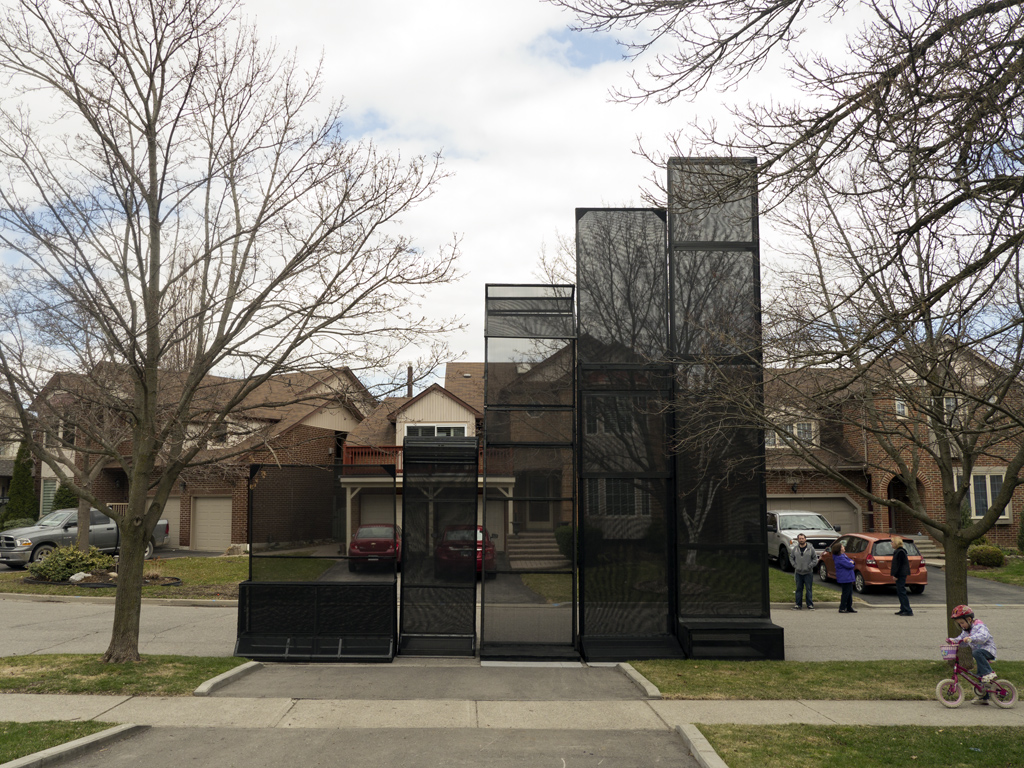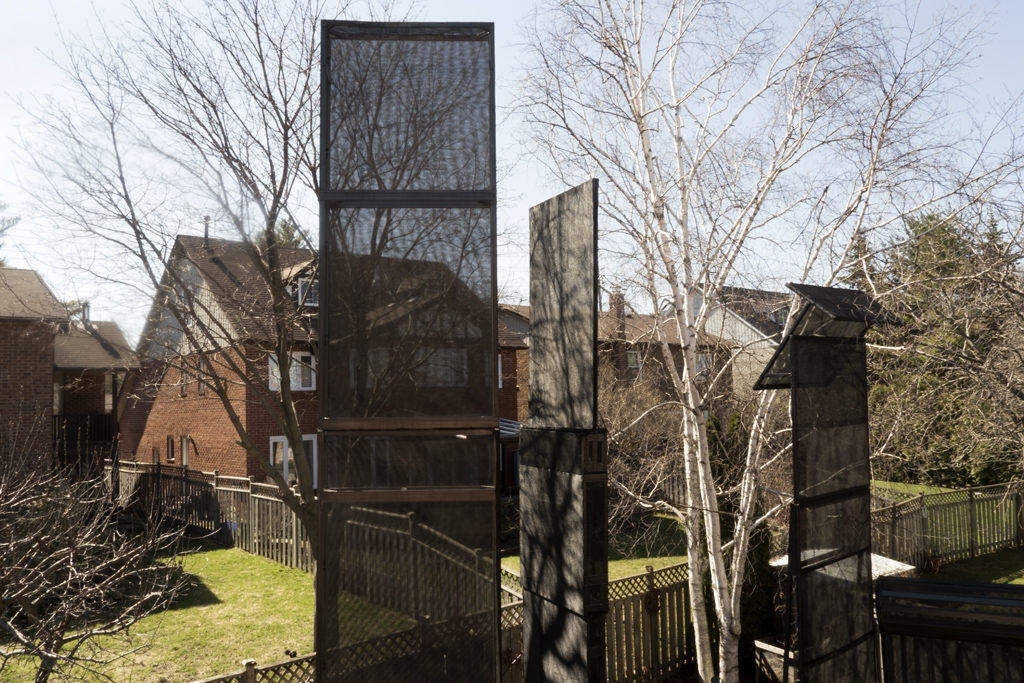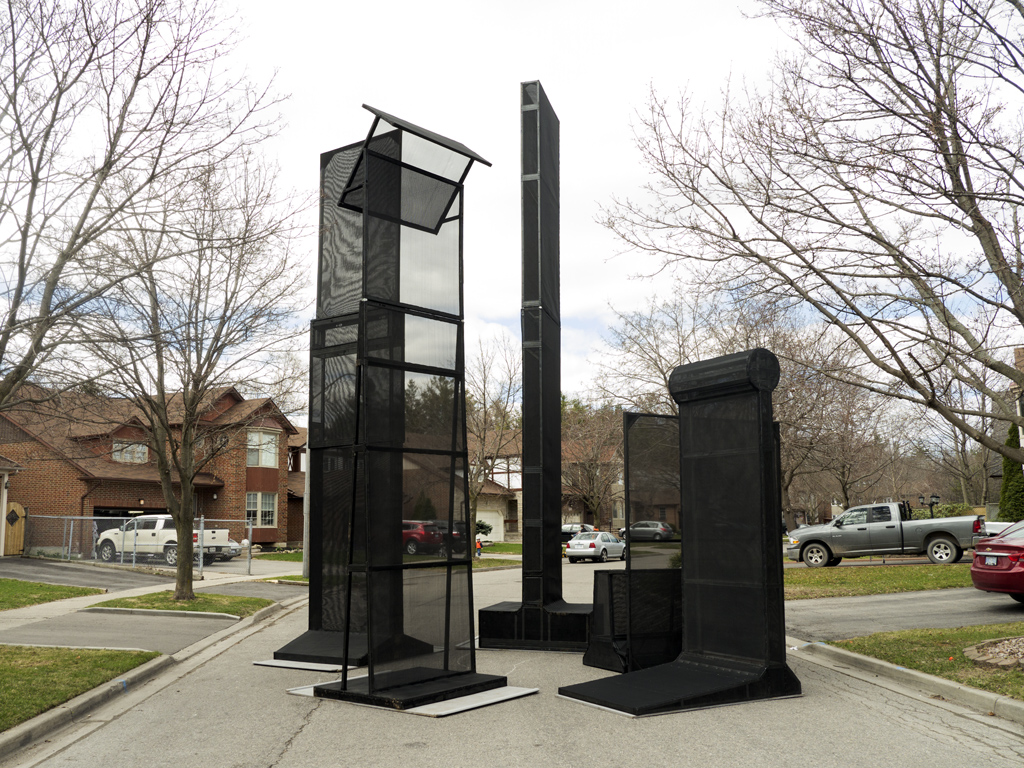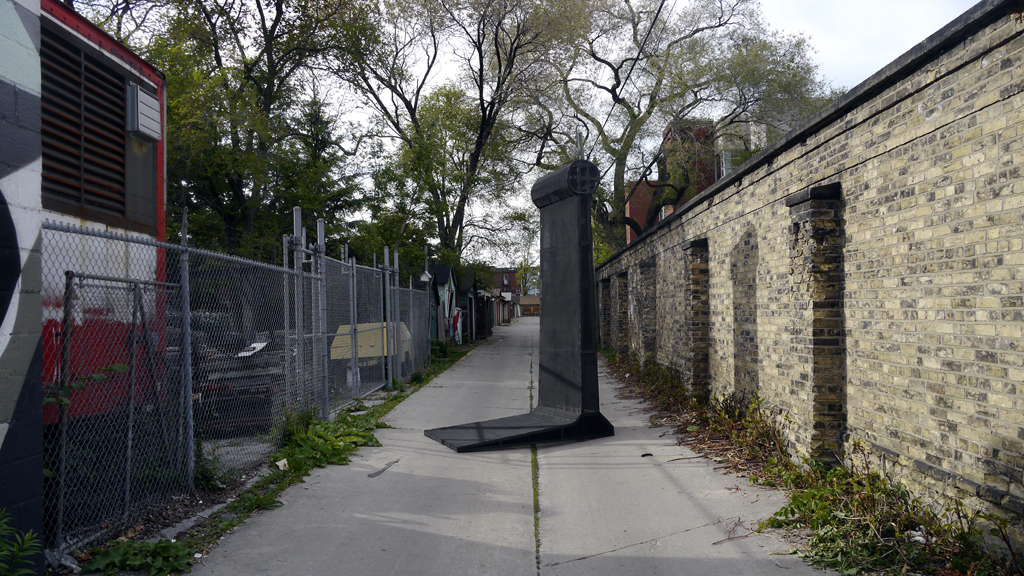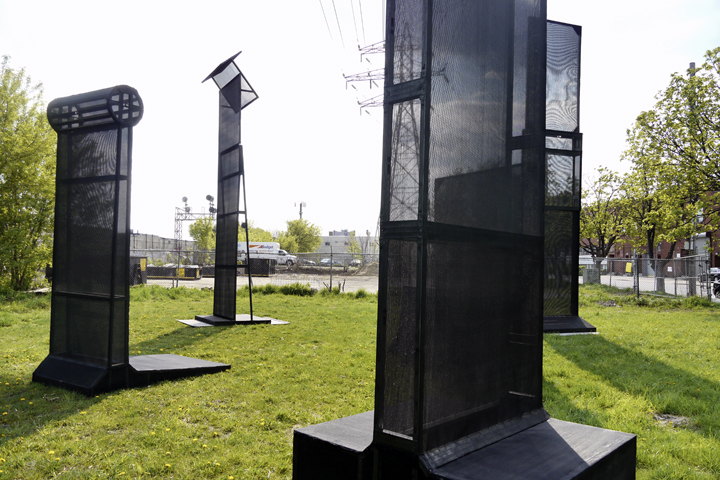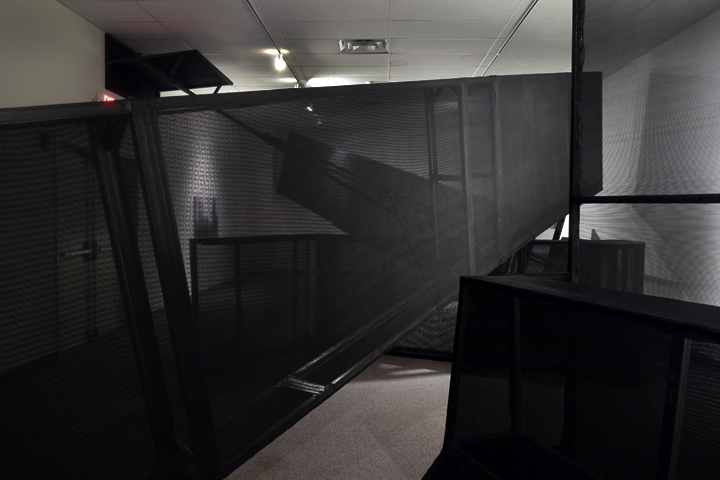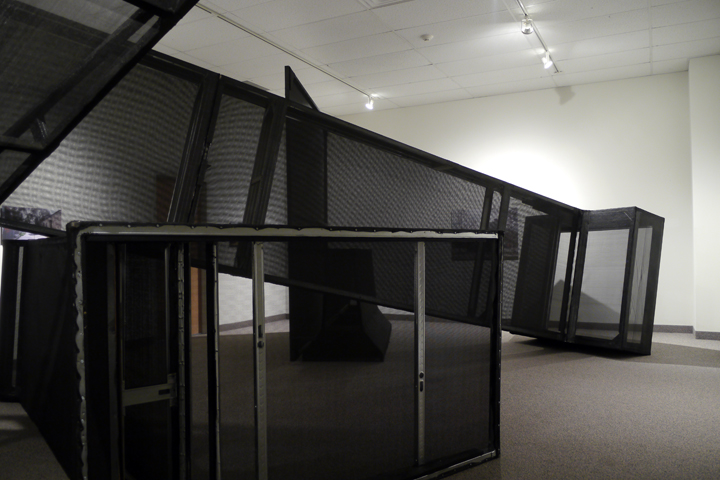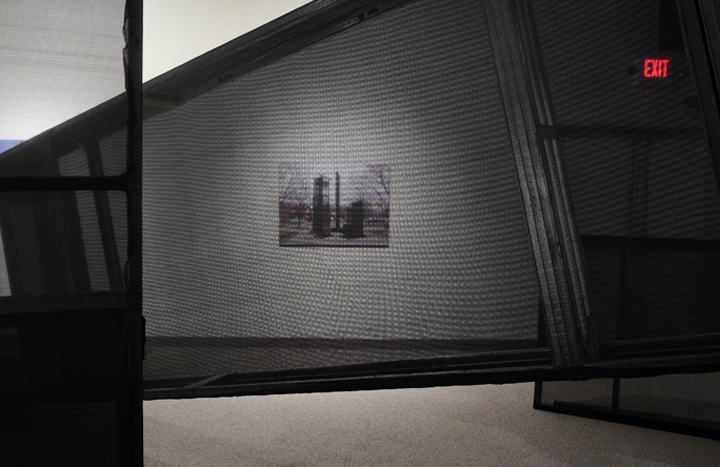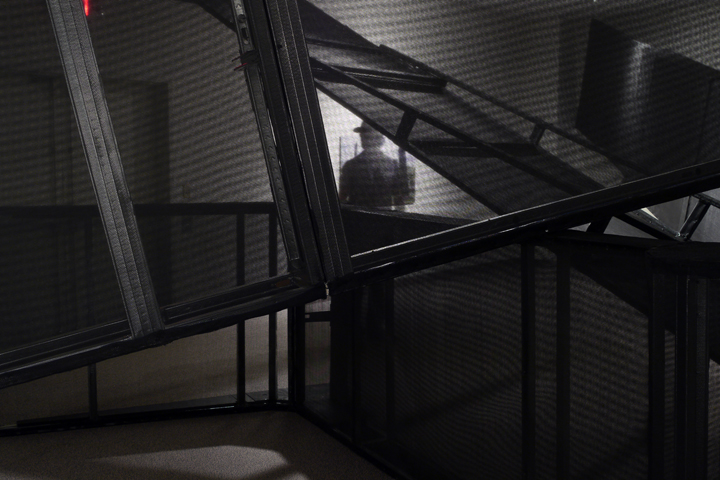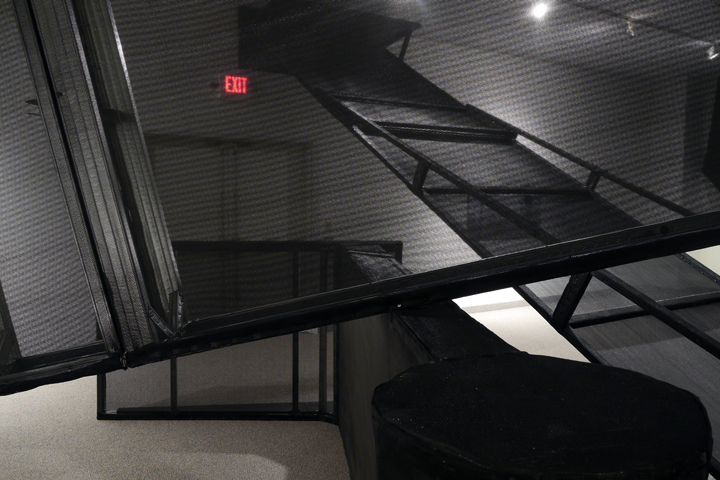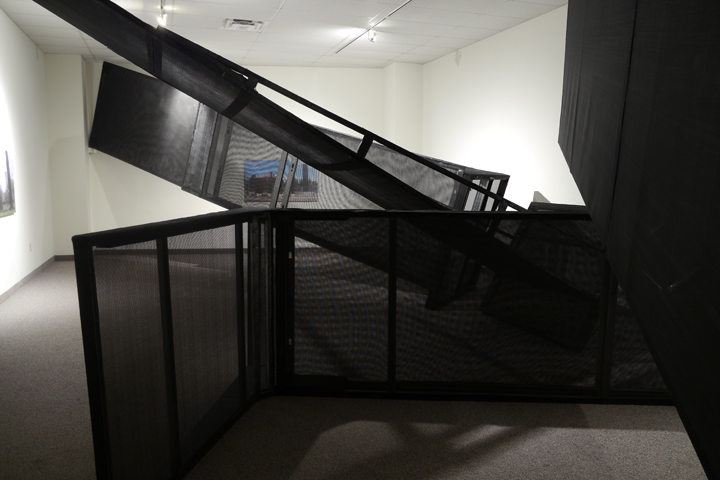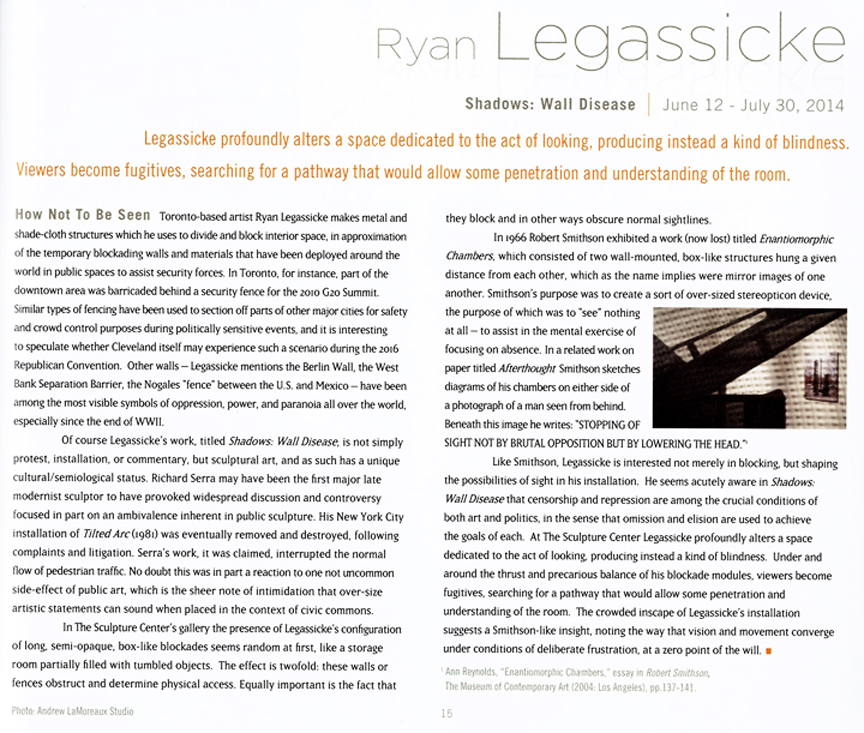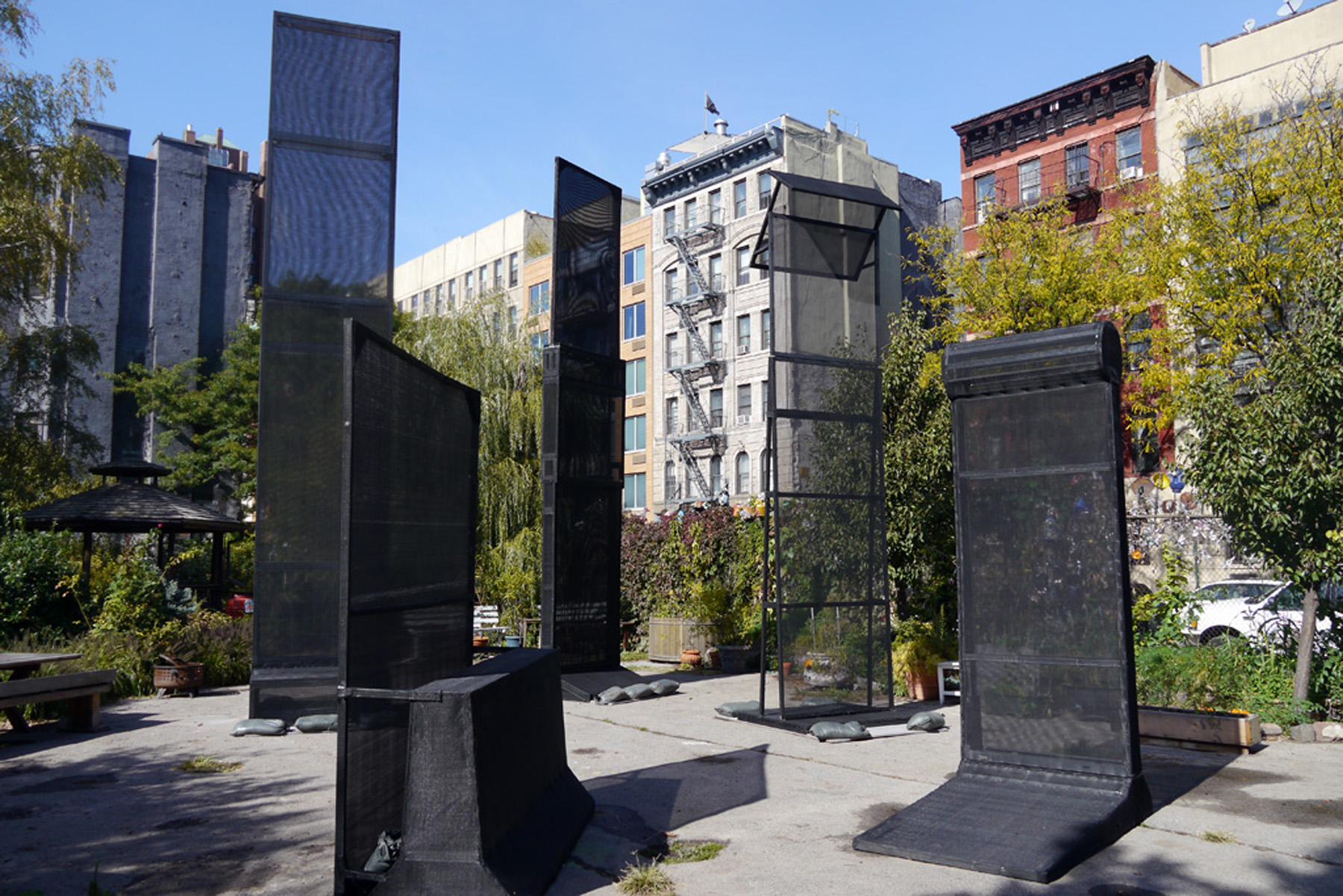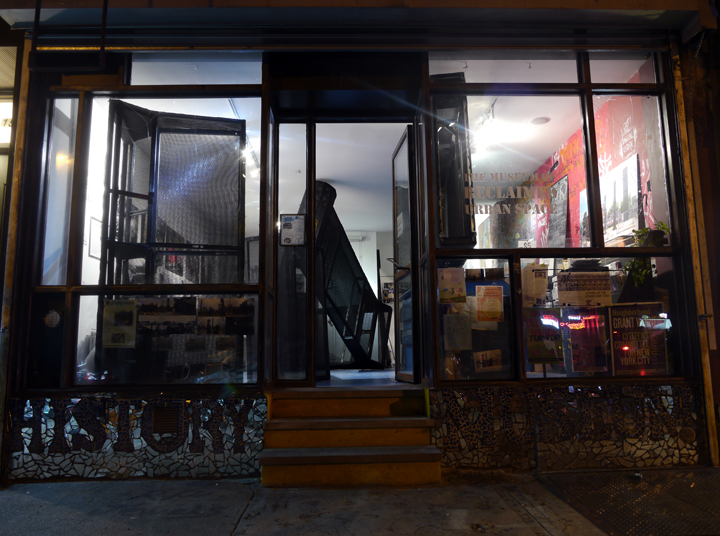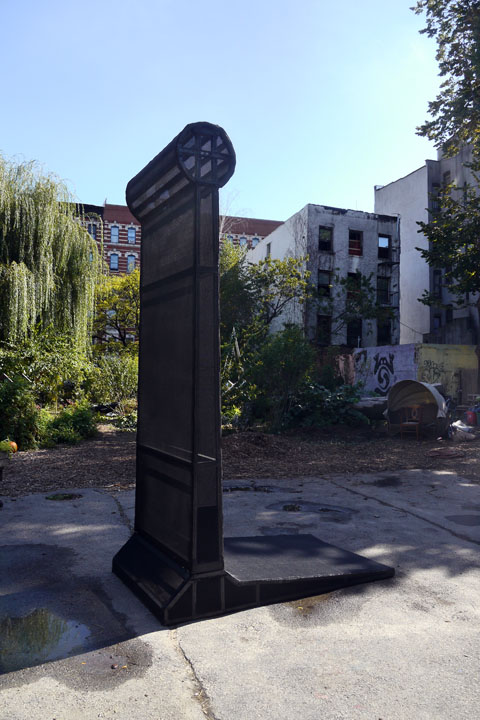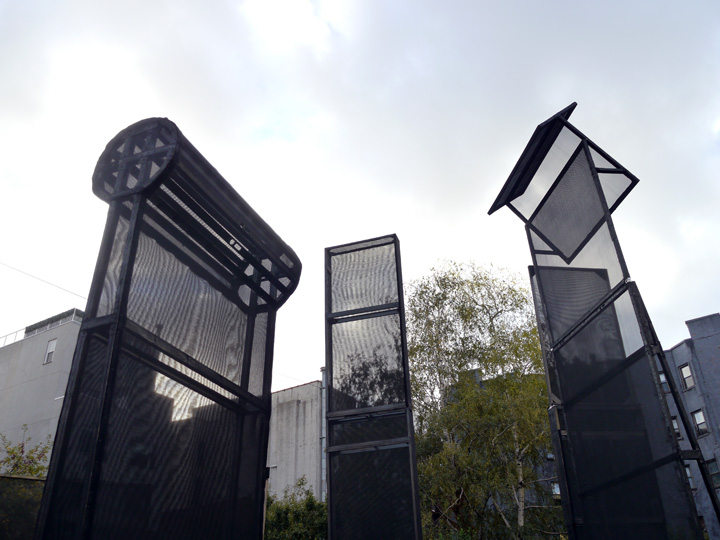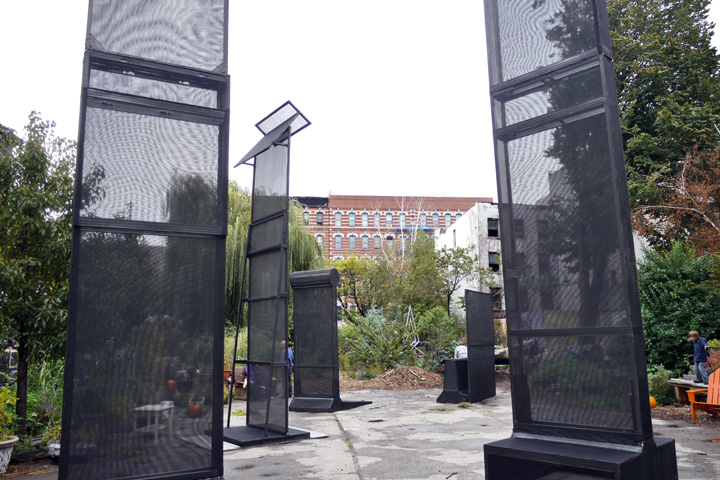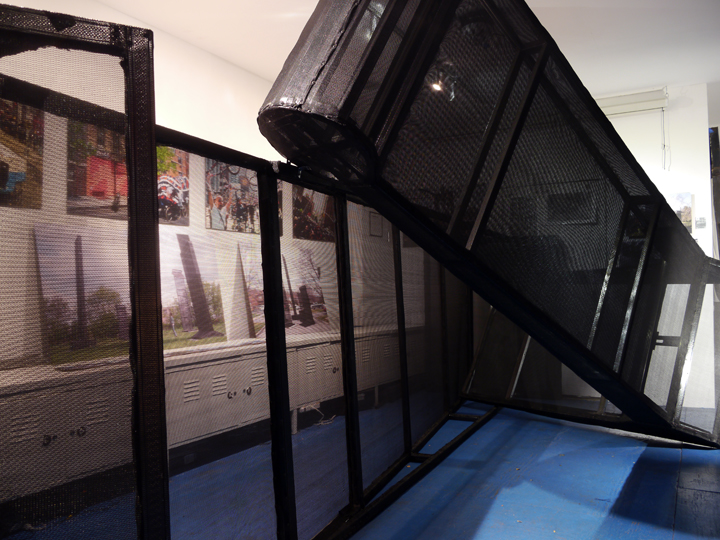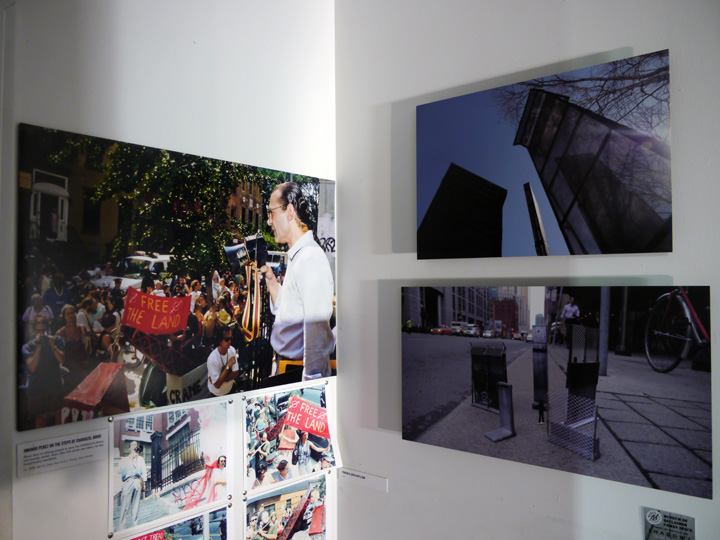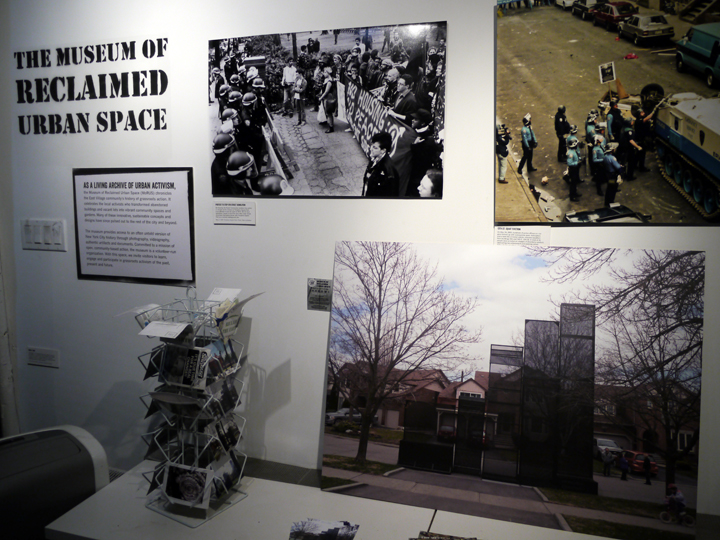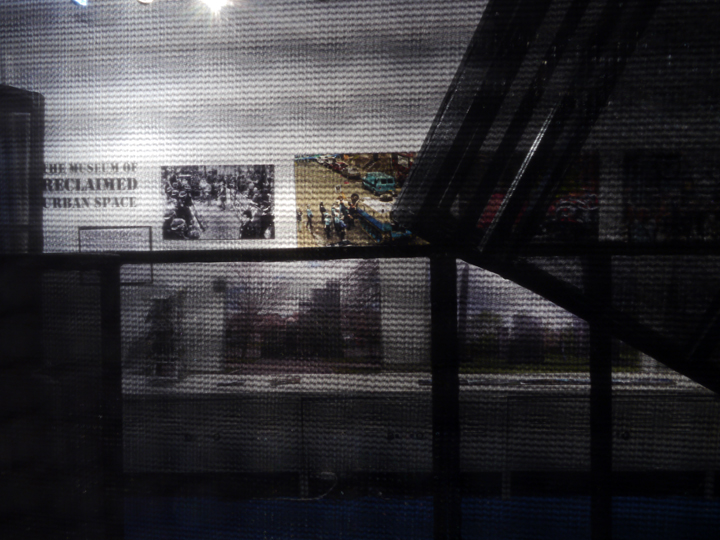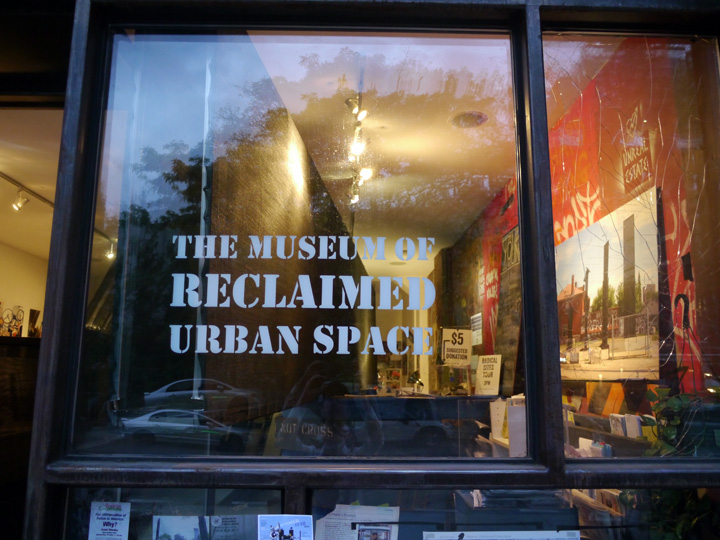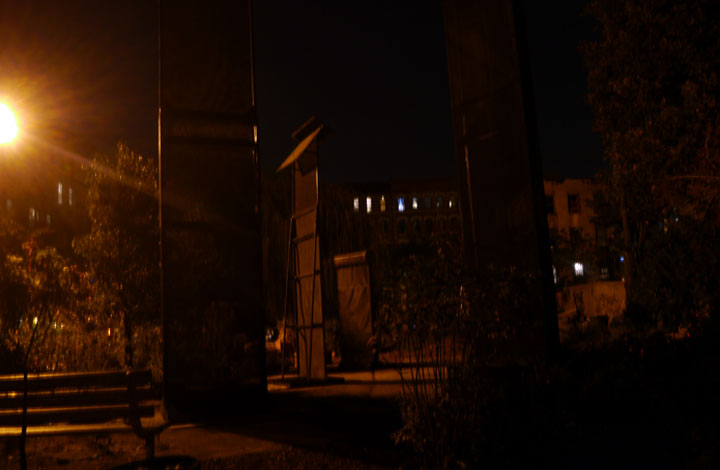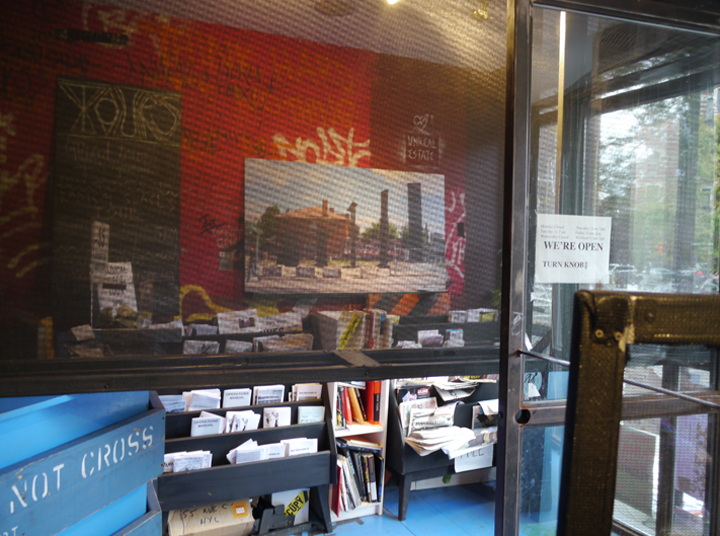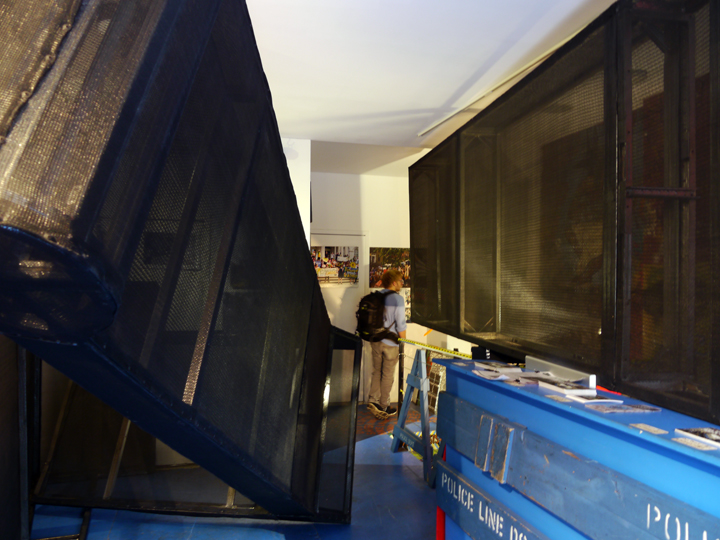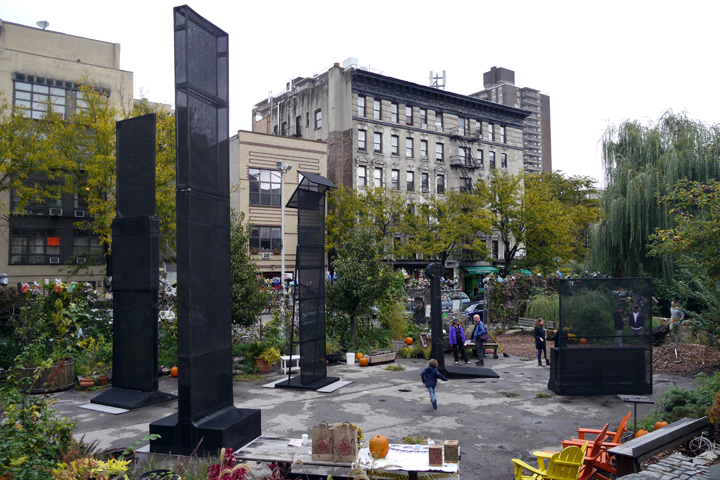Shadows / Wall Disease (2013-15)
La Plaza Cultural Community Garden was founded in 1976 by local residents who took over what were then a series of vacant city lots piled high with rubble and trash. Working with maverick architect Buckminster Fuller, they build a geodesic dome in the open “plaza” and began staging cultural events. Artist Gordon Matta-Clark helped construct La Plaza’s amphitheater using railroad ties and materials reclaimed from abandoned buildings. Like the squats the garden came under attack by developers seeking to build on the space. After numerous court battles, La Plaza was finally preserved in 2002 as part of a landmark legal settlement that saved many of similar spaces across New York City.
MoRUS is a small volunteer-run history museum of grassroots activism. They preserve the story of efforts to create community spaces in the Lower East Side, especially efforts that “reclaim” space that has been taken over by city bureaucracies or corporations. They highlight the political implications of how social structures shape and control our space and take a long-term historical perspective on how the urban landscape evolves through cycles. MoRUS is located on the ground floor of the historic C Squat on Avenue C in Alphabet City, Manhattan, New York.
Exhibition history:
Beit Zatoun House, Toronto, ON, 2015
The Sculpture Center, Main Gallery, Cleveland, Ohio, 2014
Museum of ReClaimed Urban Space & La Plaza Cultural, New York City, NY, 2014
Publication history:
Gil McElroy, “Ryan Legassicke: Wall Disease,” re:sculpt, blog.sculpture.org, June 24, 2015.
Douglas Max Utter, “Window to Sculpture Emerging Artists Series,” Sculpture Center, Cleveland, pg 14-15, 2015.
“Making, and breaking barriers around the globe,” East Villager, New York City, Oct.16, 2014, pg 3.
Ann Albano, “Breaking Boundaries at The Sculpture Center,” Can Journal, Cleveland, Ohio, Summer 2014, pg 42.

